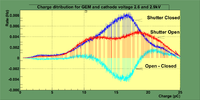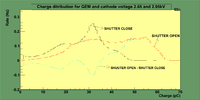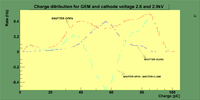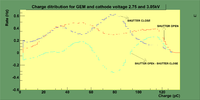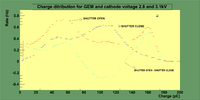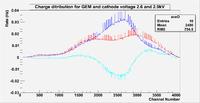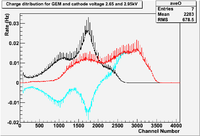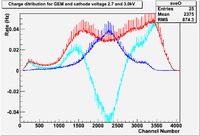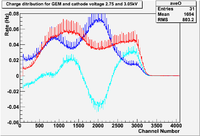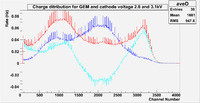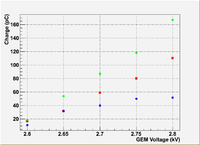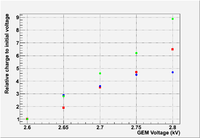Difference between revisions of "QADC spectrum"
Jump to navigation
Jump to search
| Line 38: | Line 38: | ||
{|boardclip | | {|boardclip | | ||
|- | |- | ||
| − | |[[File:gain_voltage.png | thumb |alt=Example alt text|GEM voltage vs. the charge of the peaks appear as shutter is open and close| 200px]]|| | + | |[[File:gain_voltage.png | thumb |alt=Example alt text|GEM voltage vs. the charge of the peaks appear as shutter is open (red, green) and close (blue)| 200px]]|| |
|| | || | ||
| − | |[[File:gain_voltage_ratios.png | thumb |alt=Example alt text| GEM voltage vs. the realtive gain of the peaks appear as shutter is open and close | 200px]]|| | + | |[[File:gain_voltage_ratios.png | thumb |alt=Example alt text| GEM voltage vs. the realtive gain of the peaks appear as shutter is open (red,green)and close(blue) | 200px]]|| |
Revision as of 17:44, 31 October 2013
QDC Analysis
The first test for the detector signal after installing U-233 is by using CAEN V792 Q-ADC (Analog charge to digital converter). The aim of this test is to test the shutter ability to help in distinguishing the emitted particles from U-233 source based on liberated charge from their ionization in gas.
A Non-linear increase in the charge collected by the Q-ADC as the voltage increases for GEM HV-circuit, also the figures show the change in the charge spectrum as the shutter position changed, shutter open's charge spectra show more collected charge than that of shutter close.
|
|
GO BACK [1]
